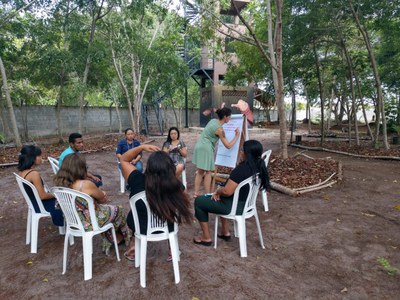Local teachers in Amazon State devise projects to engage youth in conservation and environmental education
In November, two specialists of the US Forest Service ran a workshop for 33 people, including teachers, Amazonas State officials, and decision-makers from diverse NGOs. It was aimed at fostering youth involvement in the socio-environmental development in the Anavilhanas Mosaic of Protected Areas in Amazon State. The mosaic has both “sustainable use” and stricter protection reserves, as well as National Parks and the two-day course happened in the first week of November.
Some of the teachers travelled for many hours in small motor boats to attend the course in Novo Airão, a city on the border of Anavilhanas National Park. Leslie Swada, Visitor Center Director of the Southeast Alaska Discovery Center, lives and works in Tongass National Park, Alask, and shared her experiences working in a remote forested area, where the main transportation are usually boats, and where it’s also necessary to be creative to engage youth on conservation. The tropical forest workers were surprised to find common ground from someone so far away, who could relate to their way of life.
Anavilhanas National Park is a PCAB pilot project on visiting planning management and research that receives extra support from USFS and ICMBio staff, has well as US Universities, such as Colorado State. The Director of the Center for Protected Area Management at Colorado State, Ryan Finchum, was central to the workshop’s organization and has supported the training of boat drivers that are members of a local association. A technical visit before the workshop, led by trained drivers helped the two specialists to better understand Anavilhanas and its communities along the Rio Negro and throughout the Mosaic.
“It is not just about the Forest Service helping Brazilians, but I will go back to the United States with a new understanding about how environmental interpretation can and should be incorporated into curricula and into communities. There is a benefit both ways. When we send experts to other countries, we then bring a lot of value information and learning back to our work”, summarized Galla Miller, USFS Community Engagement Specialist, based in Washington State.



